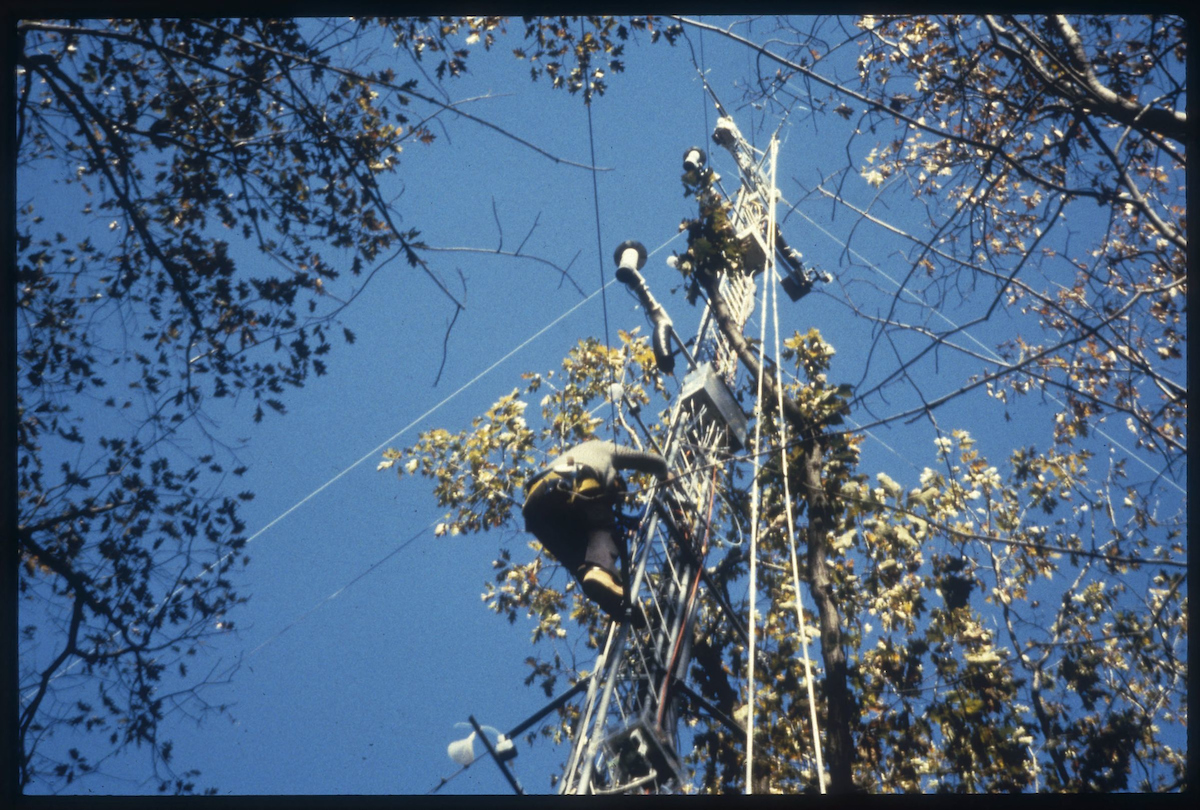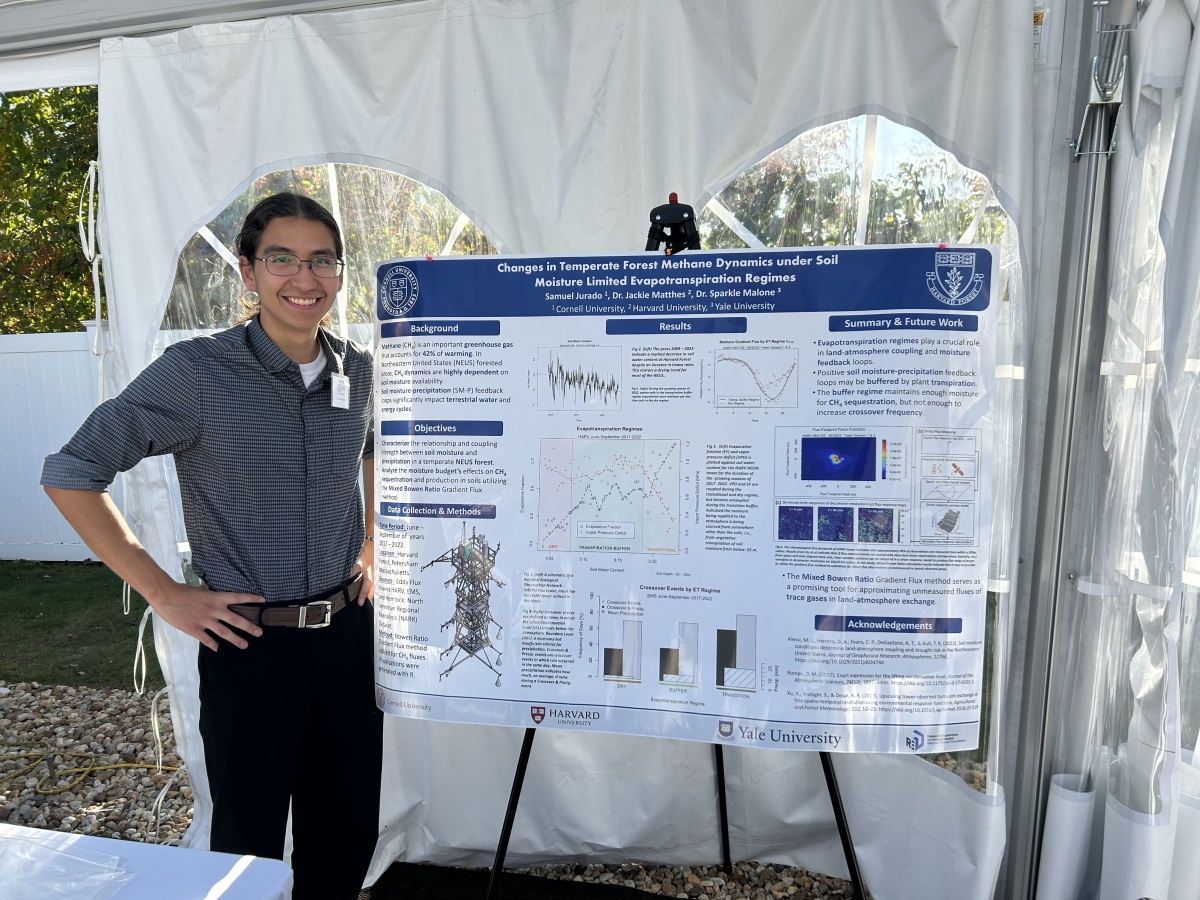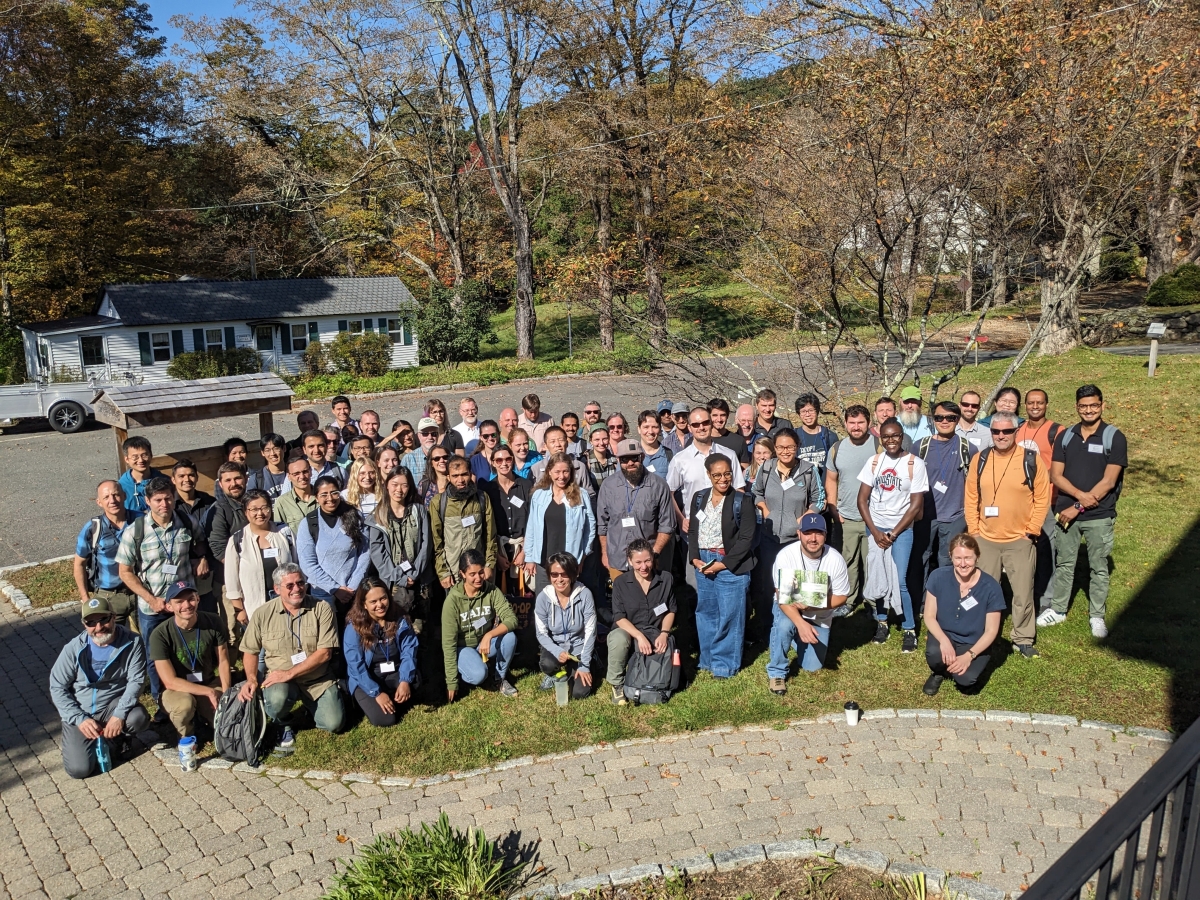You are here
Eddy Flux Researchers Convene at Harvard Forest for AmeriFlux's 2023 Annual Meeting

Last month, Harvard Forest hosted the AmeriFlux Annual Meeting, where nearly 100 researchers converged to discuss their work using eddy flux tower data from throughout the world. The longest continually running tower of its kind, Harvard Forest’s Environmental Measurement Station Eddy Flux Tower has been collecting data on the exchange of carbon dioxide and evapotranspiration between the atmosphere and the ecosystem since 1990.

Before Harvard Forest had research towers – we now have five! – Harvard University’s Steve Wofsy (photographed climbing the tower in the 1990's) wanted to understand how processes in the forest (biological factors such as tree growth and soil microbial decomposition) influenced the atmosphere (factors such as carbon dioxide greenhouse gas concentrations). The resulting eddy flux tower measures CO2, water vapor, and heat exchange every hour and is now one of over 110 active sites throughout the Americas.
It's easy to underestimate the significance of Harvard Forest’s original eddy flux tower –it’s not a tower visitors can climb, and it’s measuring invisible things. But thousands of researchers use its data to understand how ecosystems are changing, how they respond to stressors, and as a way to synthesize data for climate change modeling. The long-term nature of it helps answer questions that might otherwise be difficult to understand. “Flux towers are the picture on the puzzle box and the puzzle pieces inside are things like tree growth, soil microbial respiration, and water transport by trees,” says Jackie Matthes, Harvard Forest Senior Scientist. In addition to data collected by the flux tower, Matthes and her research team, in collaboration with William Munger at Harvard University, measure the growth of trees, the amount of biomass produced by leaves each year, and rates of decomposition. She explains that altogether these pieces add up to “the breathing of the ecosystem.”

As one of the first eddy flux towers and longest-running datasets of its kind, Harvard Forest’s CO2 data has been very well-known in this area of research. Since 1996, the grassroots AmeriFlux network has connected eddy flux researchers for annual meetings to discuss shared data, train people in making measurements, and share technical knowledge. Sam Jurado, an alumni of the Harvard Forest Summer Research Program in Ecology ('23) and current senior at Cornell University, presented to discuss his summer research using the EMS tower data (photographed).
With so many people using Harvard Forest data, hosting the 2023 Annual Meeting at Harvard Forest really connected the dots. “A lot of folks have worked with these data for decades, but by coming here they see the trees and surrounding ecosystem,” says Matthes. Attendees also visited the Forest’s Hemlock Flux Tower and a National Ecological Observatory Network (NEON) site completed in 2014, allowing cross-cutting collaboration between research networks.

Matthes works with Principal Investigator William Munger, Harvard University Senior Research Fellow in Atmospheric Chemistry, to conduct research that is supported by the AmeriFlux grant.
The AmeriFlux network is based out of the Lawrence Berkeley National Lab, whose team helps manage data and keep flux towers running. Research for this work is supported by the US Department of Energy and NSF’s Long-Term Ecological Research Network.
We extend our gratitude to Christin Buechner for her support in organizing the event.

